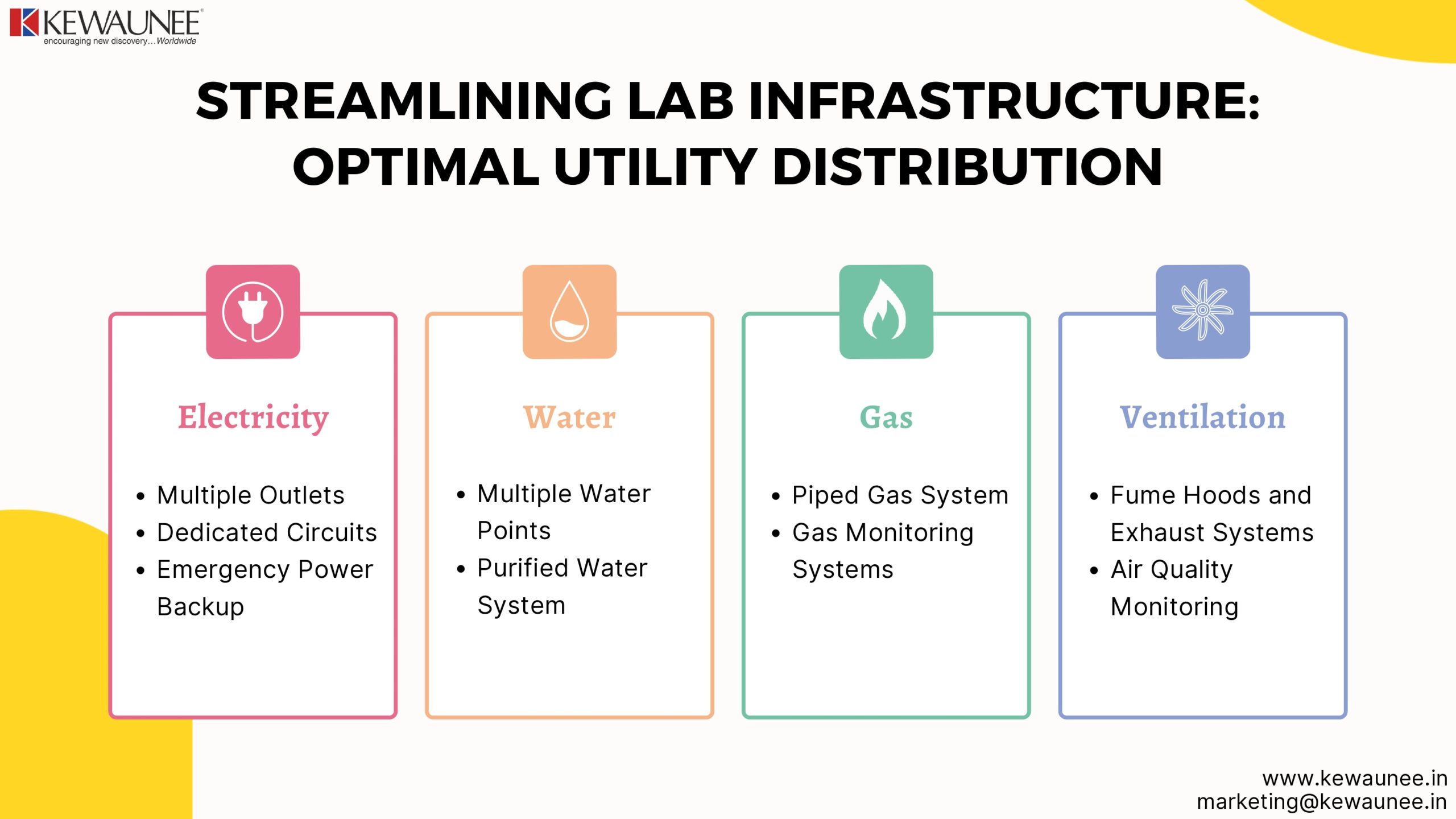Streamlining Lab Infrastructure: Optimal Utility Distribution
Laboratories are at the forefront of scientific research and innovation, playing a crucial role in driving advancements across various fields. A well-designed laboratory infrastructure is essential for ensuring smooth operations and facilitating groundbreaking discoveries.
Central to this infrastructure is the distribution of utilities, such as electricity, water, gas, and ventilation systems.
Streamlining utility distribution is vital for maximizing efficiency, promoting safety, and creating a conducive environment for researchers.
In this blog, we will explore the importance of optimal utility distribution in laboratories and the strategies that can be employed to streamline lab infrastructure effectively.
The Significance of Utility Distribution in Laboratories
Laboratories are dynamic spaces where researchers conduct experiments, analyze data, and develop new technologies.
Efficient utility distribution is essential to support the diverse needs of researchers and the wide range of equipment and instruments they use.
Properly distributed utilities not only enhance productivity but also contribute to safety, cost-effectiveness, and sustainability.
1. Electricity Distribution:
Electricity is the lifeblood of a laboratory, powering sensitive instruments, computers, and lighting. To streamline electricity distribution:
- Multiple Outlets: Ensure an abundance of electrical outlets strategically placed throughout the lab to avoid the use of extension cords and facilitate the smooth operation of equipment.
- Dedicated Circuits: Critical equipment should be connected to dedicated circuits to prevent overloads and potential damage to sensitive instruments.
- Emergency Power Backup: Install uninterruptible power supply (UPS) systems or generators to ensure continuous power supply during outages and prevent data loss.
2. Water Distribution:
Water is vital in laboratories for various applications, such as cleaning, cooling, and conducting experiments. To optimize water distribution:
- Multiple Water Points: Place water taps conveniently across the lab to minimize researchers’ movements and improve accessibility.
- Purified Water System: For experiments requiring ultra-pure water, installing a centralized water purification system can ensure a consistent supply of high-quality water.
3. Gas Distribution:
Laboratories often require different types of gases, such as nitrogen, hydrogen, and helium, for various analytical instruments. To streamline gas distribution:
- Piped Gas System: Implement a piped gas system to provide a safe and continuous supply of gases to laboratory instruments, avoiding the need for gas cylinders.
- Gas Monitoring Systems: Install gas monitoring systems to detect leaks and ensure safety for researchers and the lab environment.
4. Ventilation and Airflow:
Proper ventilation and airflow are crucial for maintaining a safe and contaminant-free laboratory environment. To enhance ventilation and airflow:
- Fume Hoods and Exhaust Systems: Place fume hoods in strategic locations to effectively contain and remove hazardous fumes. Ensure exhaust systems are designed to maintain negative pressure in the lab, preventing the spread of contaminants.
- Air Quality Monitoring: Install air quality monitoring systems to ensure that laboratory air meets safety standards and provides a comfortable working environment.
Strategies for Optimal Utility Distribution
- Collaborative Space Planning: Engage researchers and laboratory personnel in the planning process to understand their specific utility needs. Collaborative space planning ensures that utility distribution aligns with the research requirements and workflows.
- Flexibility and Scalability: Plan for future growth and technological advancements by designing utility distribution systems that can be easily expanded and adapted to meet changing research demands.
- Centralized Utility Management: Centralize the control and monitoring of utilities through an integrated building management system (BMS). A BMS allows for efficient control, optimization, and troubleshooting of utility distribution.
- Safety Considerations: Prioritize safety when designing utility distribution systems. Implement redundant safety measures, such as emergency shut-off valves for gas lines and emergency power backup for critical equipment.
- Green and Sustainable Solutions: Explore energy-efficient technologies and sustainable practices to minimize environmental impact and reduce utility costs. This may include energy-efficient lighting, water recycling systems, and energy recovery from exhaust gases.
Conclusion
Streamlining lab infrastructure through optimal utility distribution is instrumental in creating efficient, safe, and productive research environments. By strategically planning the distribution of electricity, water, gas, and ventilation systems, laboratories can enhance productivity, promote safety, and create a conducive atmosphere for scientific discoveries.
Collaborative space planning, flexibility, and safety considerations are essential components of a well-designed utility distribution system. Furthermore, embracing green and sustainable solutions contributes to the overall efficiency and environmental responsibility of laboratory operations.
As laboratories continue to drive innovation and advance scientific knowledge, the significance of optimal utility distribution cannot be overstated in shaping the future of research and discovery.
Comments are closed.











